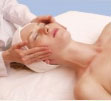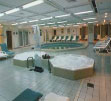
Guide for private spa pool owners
This guide provides important information for owners, operators and users of private spa pools.The most important factor in spa pool care is to keep the water clean and disinfected at all times.
A well maintained spa pool can provide many hours of enjoyment. However, if a spa pool is not properly looked after, it can be a breeding ground for harmful bacteria and other organisms, which may cause serious illness.
The correct use of spa pool water chemicals and good management of the disinfection, filtration and recirculation system will keep the spa pool water in a clean, safe and healthy condition.
Why is safe water in spa pools so important?
Warm water provides ideal conditions for the growth of micro-organisms (such as bacteria). If a spa pool is not kept clean and properly disinfected, the water may become contaminated with bacteria or other micro-organisms. Contact with contaminated spa pool water or aerosols can lead to:
- Skin, Ear and Eye infections,
- Gastro-intestinal infections (stomach upset),
- Respiratory infections that can be serious or fatal.
Newborns, the elderly or immunocompromised individuals are more vulnerable to infection from micro-organisms found in contaminated spa pool water.
How to keep the spa pool water safe
Proper disinfection and filtration of the spa pool water kills harmful micro-organisms, removes body fats and oils, and ensures the water is clean, safe and sparkling.
Water temperature and other factors affect disinfection and should be adjusted to recommended values.
Spa pool water should be tested prior to use and at least three times per week using a reliable pool water test kit, as advised by your pool supplier. At a minimum, each test should include a measure of; disinfection levels, pH and alkalinity. Temperature should also be tested regularly to ensure the best operating conditions for the particular type of disinfectant used in the spa pool.
It is very important that the pump lint-pot and filter are cleaned regularly to ensure they do not become a source of contamination for the spa pool water.
If a sand filter is used, the water used to backwash (rinse) the filter must be disposed of into the sewer or into separate underground soakage if in an unsewered area.
Disinfection agents
Use only commercially available disinfectants suitable for private spa pools. Chlorine and bromine are the most common. Other methods include ozonation, UV irradiation and ionising systems.
Note: Ozone, UV and ionising systems require the addition of a small amount of oxidising agent to maintain a residual disinfection activity in the water.
The ideal disinfection system is one that uses automatic dosing and filtration however, manual dosing is commonly used in private spa pools. When using manual dosing, it is important to check the pump and filter system daily to ensure they are clean and working correctly.
A method such as a floating immersion dispenser should be used to disinfect the spa pool water at all times when the pool is not in use. Consult with the spa pool supplier for manual operation requirements.
Where the spa pool is constantly used it may become heavily contaminated and need to be "shock dosed" to bring it back to the correct operating conditions (see below).
Recommended disinfection levels for spa pools
Chlorine disinfection:
not less than 2 mg/L and up to 4 mg/L residual free chlorine while the pool is in use. The ideal level is 3 mg/L.
Bromine disinfection:
not less than 4 mg/L and up to 8 mg/L free bromine while spa pool in use. The ideal level is 6 mg/L.
Other agents:
Consult with the supplier of the disinfection agent for details.
Note:
mg/L (milligrams per litre) is the same as ppm (parts per million).
skin or eye irritation associated with a strong chlorine like smell can be caused by insufficient residual chlorine levels.
Shock dosing
Shock dose spa pools at least weekly and more often if the pool is in constant use. To do this using chlorine:
Use a metric measuring jug or scales to add a sufficient quantity of chlorine (or other suitable oxidising agent) to the water to achieve 10mg/l residual free chlorine; eg. add 200 mL of liquid sodium hypochlorite (12.5% available chlorine) or 30 g of granular calcium hypochlorite per 1000 litres of water.
Ensure 10mg/L residual free chlorine is maintained for at least one hour.
Operate the pump and filter at all times during shock dosing.
Other products may be available for this purpose. Consult with your pool supplier.
Caution: Do not use spa pool until residual free chlorine falls to 4mg/L.
pH range
Spa pool water must be within the following pH range for the disinfectant to work efficiently:
- For chlorine: 7.2 to 7.6
- For bromine: 7.2 to 8.0
Total alkalinity range
Total alkalinity prevents cloudy water, scale formation, corrosion of metals and makes the water comfortable. To adjust, add sodium bicarbonate as advised by the supplier.
Total alkalinity of the water should be checked weekly to ensure the following levels:
- For chlorine disinfection: 60 mg/L to 200 mg/L.
- For bromine disinfection: 150 mg/L to 200 mg/L.
Note: When adding chemicals to pool water, first add the chemicals to water in a bucket, then add the mixture to the pool water with the pump and filter operating. Add small quantities at a time. Wait 10 to 15 minutes before testing.
Water temperature
Check the temperature regularly and maintain it at a suitable comfort level, usually 35oC to 37oC.
Water temperature should not exceed 40oC as it will cause discomfort for the person using the spa pool and may even cause increased body temperature (hyperthermia).
If the pool is continuously heated it will require continuous disinfection.
Changing the water
Replace 10% to 15% of the water every week and at any other time if:
- The spa pool is used often or by a large number of people and the disinfectant cannot be adjusted to the recommended levels
- Algae starts to grow on the pool surfaces
- The water becomes cloudy and cannot be easily cleared.
In accordance with SA Water restrictions the level of water in a spa pool that has been previously filled with water may be topped up or maintained only with water from a hand held hose or bucket. All water should be added with the filtration system running.
There may be times when the water quality is severely affected and the spa pool may need to be completely emptied and refilled, if this is the case a permit will need to be sought from SA Water to refill the pool for health reasons.
If algae are present ensure the disinfectant and pH levels are in accordance with the recommended range. If algae are present in high numbers a super chlorination and manual removal procedure may need to be considered. If this is not successful the spa may need to be emptied and the inside surfaces scrubbed with a chlorine solution using gloves, protective glasses and mask before rinsing and refilling. Ensure the area is well ventilated. If algae persist the addition of an algaecide may be required. A pool chemical supplier should be consulted.
When NOT to use the spa pool
Spa pools should not be used:
- If the disinfectant level and/or pH is not within the recommended range or the pool water is dirty or cloudy,
- If the filtration unit and recirculation pump are not operating properly,
- By persons who are under the influence of alcohol or taking drugs that cause drowsiness,
- By persons with open wounds or who feel unwell or are pregnant,
- By persons who are immunocompromised. When in doubt check with your doctor before using a spa pool.
General rules for using a spa pool
- Always keep your head above water,
- Spend no longer than 20 minutes in the spa pool at any one time,
- Always supervise children using the spa pool,
- Do not use a spa pool that isnot properly maintained.
Terms used
A private spa pool is one that is available only for the use of the owner/occupier and invited guests in a private home. It does not include a communal spa pool in flats, units, retirement villages, and the like, under the care and control of a corporate body.
Spa baths are not discussed in this guide as they are emptied after each use like a conventional bath.
Residual free chlorine is chlorine left over after combining with organic matter in the spa pool. This residual chlorine is free to kill bacteria from the bather or other sources.








